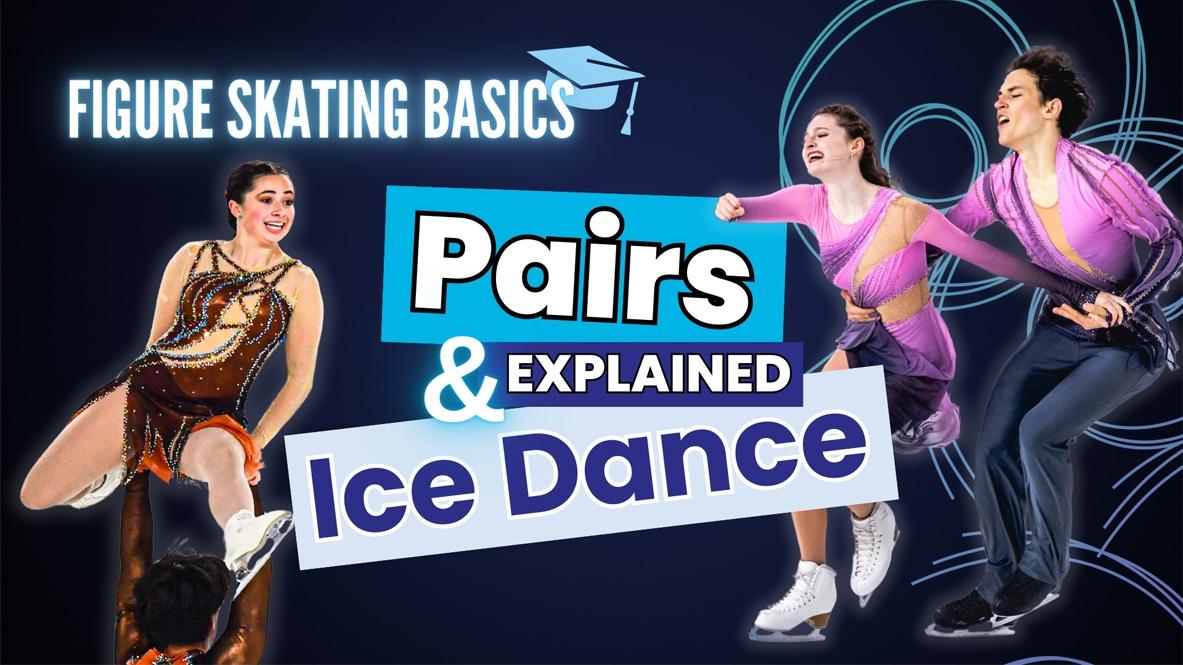FIGURE SKATING
Pair Skating vs. Ice Dancing: A Comparison of Ice Skating Disciplines
02 Oct 2024
In Figure Skating, we have two couple disciplines, that is – a woman and a man perform together on the ice. One is Pair Skating, the other one is Ice Dance and they are not the same. Let’s have a look at the background as well as at the differences and similarities.
Look at the past
Pair Skating is a very old discipline and emerged soon after Single Skating as a sport. The first ISU World Championship took place in 1896 and featured only Men. A Women’s competition was held in 1906 for the first time and Pairs was added in 1908. When Figure Skating was included into the program of the Olympic (Summer) Games in 1908, there were events in Men’s and Women’s Singles as well as in Pairs.
Ice Dance is much younger as a competitive sport. The discipline began to develop in the 19th century when Skaters performed ballroom dances such as Waltzes on the ice, but it was at first a recreational pastime. In the 1930s, the first competitions at the national level were held in North America, Great Britain and Austria. In 1950, Ice Dance was included as a “special event” for the first time in the ISU World Championships. Two years later, the ISU included Ice Dance officially as a discipline in the World Championships. However, it took more than 20 years before Ice Dance became an Olympic sport in 1976.


In Ice Dance (right), sustained arm hold between partner is required, much less in Pairs (left).
Difference in Elements
Pair Skating features all Single Skating elements such as solo jumps, footwork and spins plus throw jumps – when the female partner is assisted by the man in doing a jump – as well as overhead lifts and pair spins.
Ice Dancers perform footwork – side by side and in holds -, dance spins, twizzles and lifts that are not overhead but also very acrobatic. In the past few years, several choreographic elements (for example lift, spinning movement, sliding movement, assisted jump) have been added. A choreographic element has no level of difficulty but only a base value and Skaters get their points from the judges for the execution.


Twist element in Pair Skating (left) vs Rotational Lift in Ice Dance (right).
An Ice Dance competition used to consist of three segments – Compulsory Dance (Pattern Dance), Original/Short Dance and Free Dance. Nowadays only novice level categories compete the Pattern Dances that are based on ballroom dances such as Waltz, Foxtrot and Tango and where the athletes have to perform required steps and turns. However, Junior and Senior level couples include parts of the Pattern Dances in the Rhythm Dance.
Pair Skating lifts are different not only because they are overhead. Pair Skating lifts are distinguished by different holds such as hand-to-hand or hand-to-hip while Ice Dance lifts are identified by the position of the lifting partner: rotational, straight line or curve.


Difference in lifts between Pairs (left) and Ice Dance (right).
Some aspects are similar
While Pair Skating features very athletic elements and Ice Dance focuses more on difficult footwork and artistry, it is for both disciplines very important that the couple skates as one and is not just performing elements side by side or together. The judges assess the harmony between the partners, matching movements and rhythm as well as choreography, interpretation, skating skills and transitions in the component score.
Therefore, it is very common for all Skaters and not only for Ice Dancers to take dance and ballet lessons off the ice. Obviously, Ice Dancers will focus more in their training on the dance aspects while Pair Skaters have to incorporate exercises for working on jumps and throws. However, Ice Dance has become very athletic as well. The Ice Dancers are constantly looking for innovative lifts and choreo moves and work with acrobats.
All Skaters have to complete extensive workouts off the ice to be able to perform at their best on the ice. They warm up and cool down, stretch, dance/ballet classes and athletic training.
Pair Skating teams learn from Ice Dancers and you will see Ice Dance moves in their routines such as footwork in hold and little choreo lifts in the choreo sequence to make them more attractive.


Even though there are similarities and cross overs, Ice Dance and Pair Skating remain two very different disciplines that require different skills. However, Ice Dance and Pair Skating have in common that they are spectacular and very enjoyable to watch. It makes them special and attractive that there are two people on the ice interacting with each other and telling a story.











